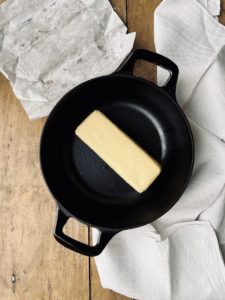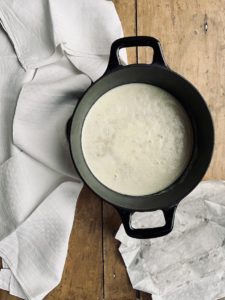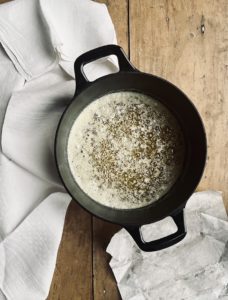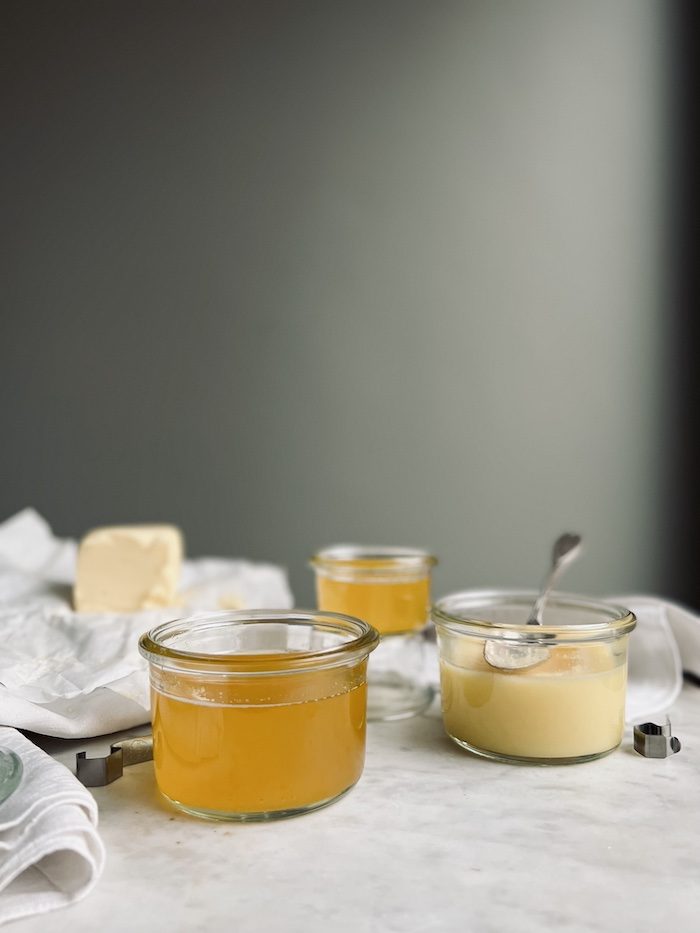
WHY?
- It’s delicious: It tastes like concentrated butter with a nutty, sometimes caramel-like taste.
- It’s nutrient-dense: It’s a good source of vitamin A, vitamin K2 and gut healing, anti-inflammatory butyric acid.
- It’s often tolerated by people with dairy sensitivities: Through the process of making ghee, the main dairy allergens casein (milk protein) and lactose (milk sugar) are removed. Whereas there might be traces of them found in the end product, a lot of people with dairy sensitivities are able to eat ghee.
- It doesn’t burn when frying with it: Due to its high smoke point, ghee unlike butter does not so easily turn brown or burn during the process of frying or roasting.
What is Ghee?
Ghee is clarified butter, clarified of its water and milk solids contents. So it’s basically pure milk fat. Through the process of clarification the milk fat becomes shelf stable.
What to use ghee for?
Ghee is an ancient cooking fat traditionally used in many regions of the world and it’s used in all kinds of preparations from Indian curries to Palestinian deserts. Also in Switzerland it used to be the main cooking fat and went under the name “Bratbutter” (frying butter). Due to its high smoke point at around 250℃ (butter: 150℃, olive oil: 200℃) ghee can be safely used for frying and roasting. I use ghee for frying eggs, meat, fish, potatoes and pancakes and I love it on roasted veggies and in stews. It can also be used as a butter substitute on bread or for baking.
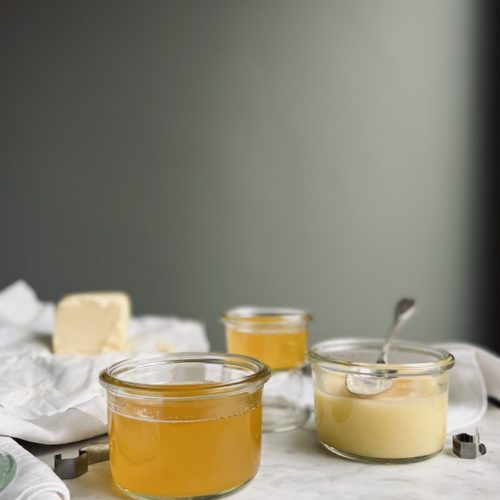
Ghee
Ingredients
- 500 grams butter (unsalted) best pasture raised, organic
Instructions
- Put the whole block/s of butter in a heavy-bottomed pot, slowly melt on low heat.

- Once melted, the butter starts to bubble and foam while the water evaporates. A thin layer of solids forms on top.

- Simmer on low heat until most of the white foamy bubbles have disappeared. You’ll see accumulated milk solids on the bottom of the pot. This process can take anything from 20 to around 40 min depending on the pot and heat intensity.

- Let cool down for 15 min, then strain through a tight metal sieve or a coffee filter into glass jars.
Notes
- Ghee is something I always make when I’m in the kitchen preparing a meal anyway. It is no effort at all but still it’s easier being around observing the process, at least if you’re new to making ghee.
- If you’ve cooked your butter for too long and the milk solids on the bottom of your pot turned dark brown, don’t worry. Strain out the solids like described above and you end up with a version of ghee that tastes a bit like toffee.
- When I make ghee I usually make several jars. One I store next to the stove for everyday cooking, the rest I store in the fridge.
